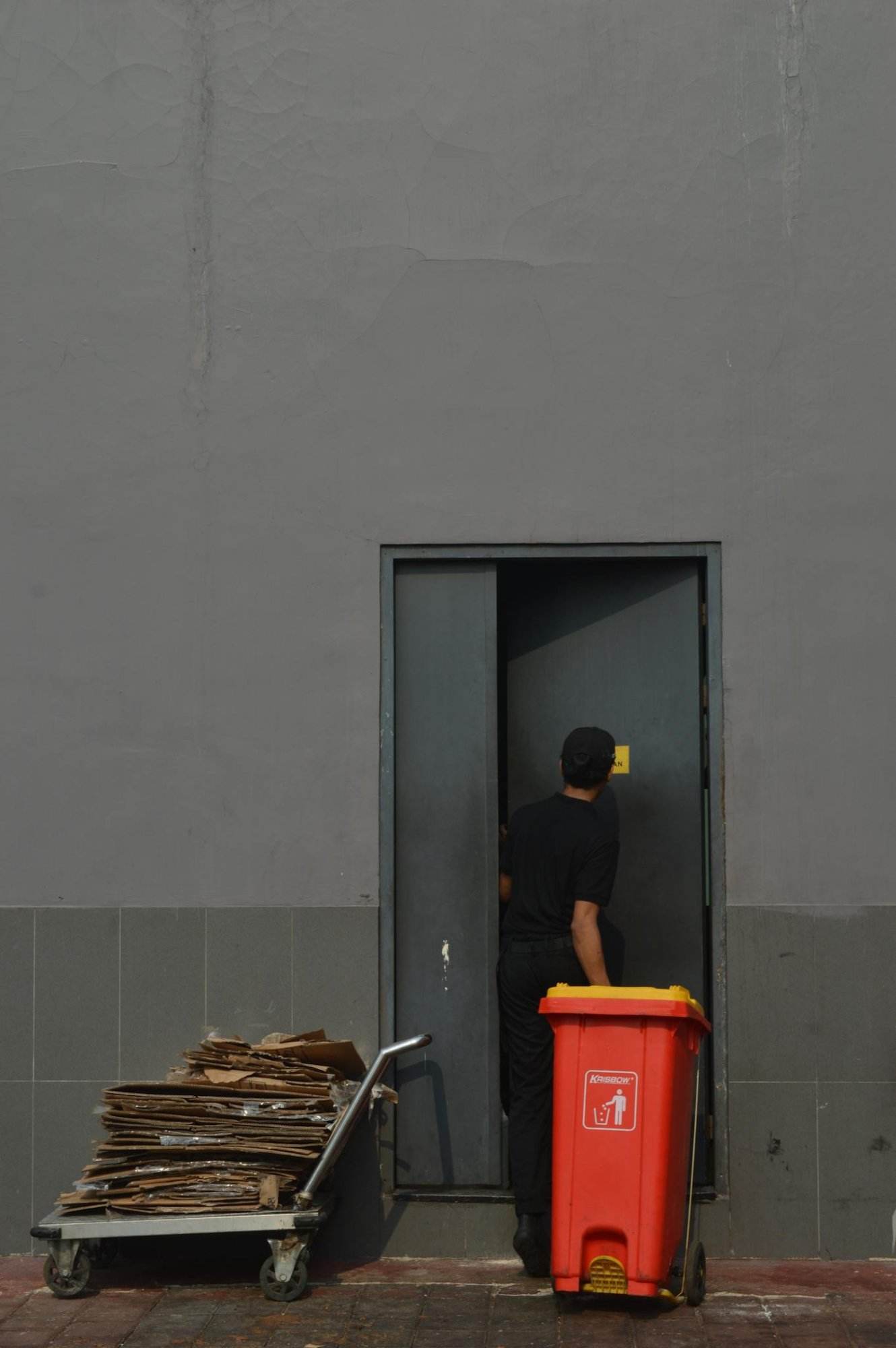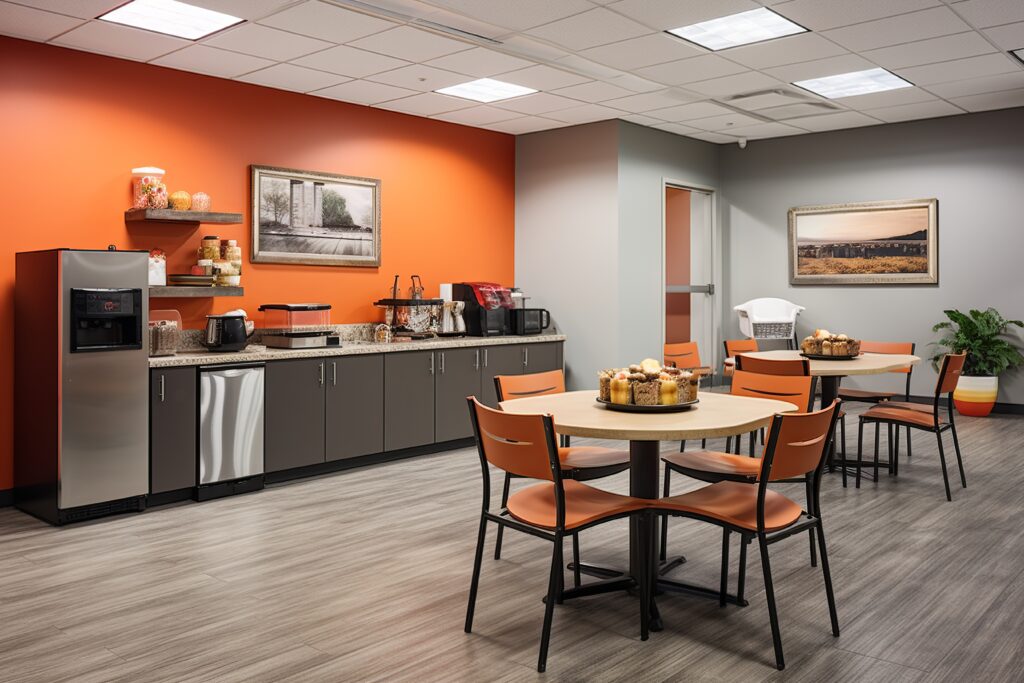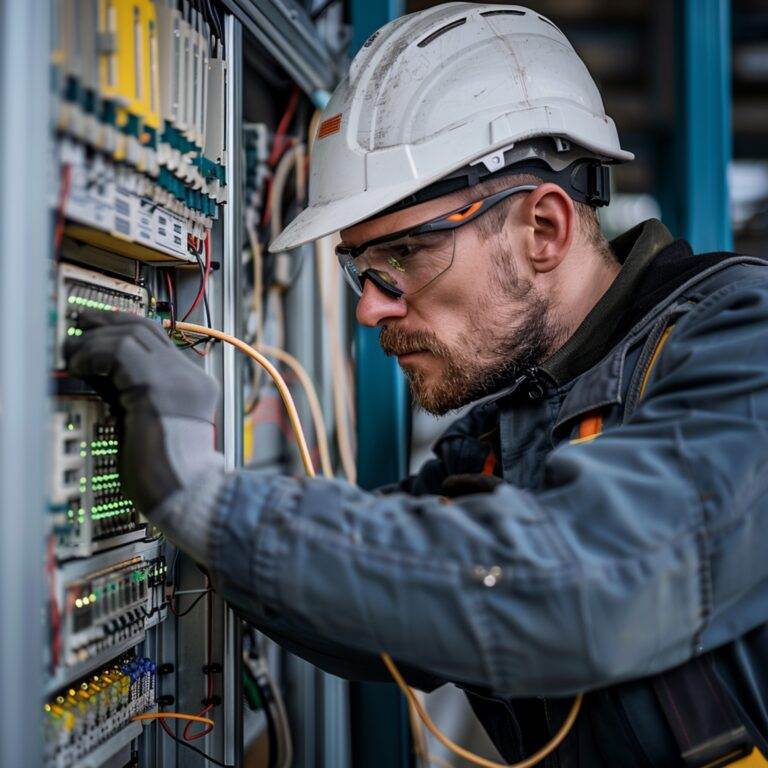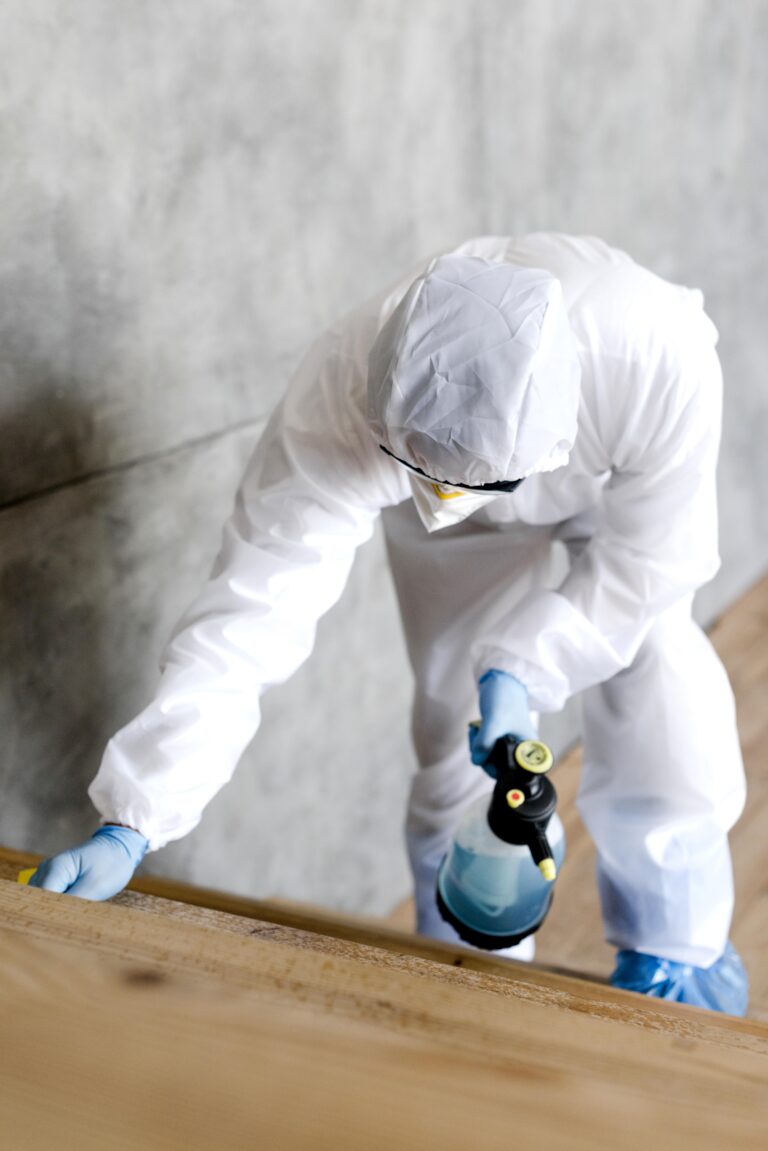Break areas in the workplace serve as essential spaces for employees to recharge and rejuvenate. These designated zones provide a necessary respite from the demands of daily tasks, allowing individuals to step away from their workstations and engage in restorative activities. In a fast-paced environment, the significance of these areas cannot be overstated; they contribute to overall employee well-being, productivity, and job satisfaction.
A well-designed break area can foster a sense of community and belonging, which is vital for maintaining a positive workplace culture. Moreover, break areas can significantly impact employee morale. When employees have access to comfortable and inviting spaces to unwind, they are more likely to return to their tasks with renewed energy and focus.
This not only enhances individual performance but also contributes to the collective success of the organization. In Northern California, where the work culture often emphasizes innovation and collaboration, investing in break areas can be a strategic move to attract and retain top talent. By prioritizing these spaces, companies can demonstrate their commitment to employee welfare and create an environment that encourages creativity and collaboration.
Key Takeaways
- Break areas in the workplace are important for employee well-being and productivity.
- Understanding the needs and preferences of employees is crucial for designing effective break areas.
- Creating a comfortable and relaxing environment can help reduce stress and improve morale.
- Incorporating functional and ergonomic furniture can enhance the comfort and usability of break areas.
- Adding greenery and natural elements can contribute to a calming and rejuvenating atmosphere.
Understanding the Needs and Preferences of Employees
To create effective break areas, it is crucial to understand the diverse needs and preferences of employees. Each individual has unique ways of unwinding, whether it be through social interaction, quiet reflection, or engaging in physical activities. Conducting surveys or focus groups can provide valuable insights into what employees desire in a break area.
This information can guide the design process, ensuring that the space caters to various preferences and promotes inclusivity. Additionally, understanding the demographics of the workforce is essential. For instance, younger employees may prioritize spaces that facilitate social interaction and collaboration, while older employees might prefer quieter areas for relaxation.
By taking these factors into account, organizations can create break areas that resonate with their workforce, ultimately leading to higher satisfaction levels. In Northern California’s diverse work environment, recognizing these differences is key to fostering a harmonious workplace where everyone feels valued.
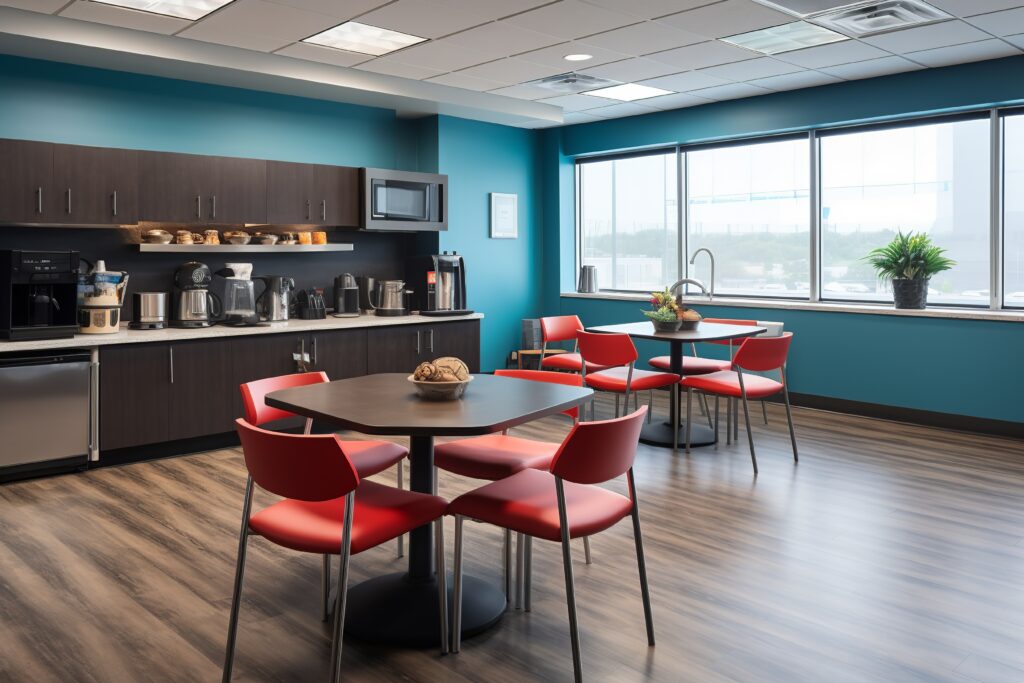
Creating a Comfortable and Relaxing Environment
A comfortable and relaxing environment is paramount in any break area. The design should prioritize elements that promote relaxation and stress relief. Soft seating options, such as lounge chairs or bean bags, can create an inviting atmosphere where employees feel at ease.
Additionally, incorporating soothing colors and natural light can enhance the overall ambiance, making the space more appealing for employees seeking a moment of tranquility. Furthermore, the layout of the break area plays a significant role in its effectiveness. Open spaces that allow for easy movement and accessibility can encourage employees to utilize the area more frequently.
Creating distinct zones within the break area—such as quiet corners for solitude and communal tables for socializing—can cater to different preferences while promoting a sense of balance. In Northern California’s competitive job market, providing a serene escape from work-related stress can be a powerful tool for enhancing employee satisfaction and retention.
Incorporating Functional and Ergonomic Furniture
The choice of furniture in break areas is critical for ensuring both functionality and comfort. Ergonomic furniture not only supports physical well-being but also encourages employees to take breaks more frequently. For instance, adjustable seating options can accommodate various body types and preferences, promoting better posture during relaxation periods.
Additionally, tables at varying heights can facilitate different activities, from casual dining to collaborative discussions. Incorporating functional furniture that serves multiple purposes can also maximize the utility of break areas. For example, modular seating arrangements can be easily reconfigured to accommodate different group sizes or activities.
This flexibility allows organizations to adapt their break areas to meet changing needs over time. In Northern California’s dynamic work environment, investing in high-quality, ergonomic furniture can significantly enhance employee comfort and productivity during breaks.
Adding Greenery and Natural Elements
Integrating greenery and natural elements into break areas can have profound effects on employee well-being. Studies have shown that exposure to nature can reduce stress levels, improve mood, and enhance overall cognitive function. Incorporating plants into break areas not only beautifies the space but also contributes to a healthier indoor environment by improving air quality.
In addition to plants, natural materials such as wood or stone can create a calming atmosphere that resonates with employees. Water features or natural light sources can further enhance this connection to nature, providing a serene backdrop for relaxation. In Northern California, where the natural landscape is celebrated, drawing inspiration from the outdoors can create a harmonious balance between work and nature within the workplace.
Providing Entertainment and Recreational Activities
Offering entertainment and recreational activities in break areas can significantly enhance employee engagement and satisfaction. Providing options such as games, books, or even art supplies can encourage employees to take breaks that are both enjoyable and stimulating. These activities not only serve as a distraction from work-related stress but also promote creativity and collaboration among colleagues.
Moreover, incorporating recreational facilities such as ping pong tables or foosball can foster a sense of camaraderie among employees. These activities encourage social interaction and teamwork, which are essential for building strong workplace relationships. In Northern California’s vibrant work culture, providing opportunities for fun and relaxation can contribute to a more cohesive team dynamic while enhancing overall job satisfaction.
Promoting Social Interaction and Collaboration
Break areas should be designed with social interaction in mind. Creating spaces that encourage employees to connect with one another can foster collaboration and strengthen workplace relationships. Communal seating arrangements or open layouts can facilitate conversations among colleagues, allowing them to share ideas and experiences outside of formal meetings.
Additionally, hosting informal gatherings or events in break areas can further promote social interaction. Whether it’s a weekly coffee chat or a monthly potluck, these activities can help build a sense of community within the workplace. In Northern California’s diverse workforce, promoting social connections is vital for creating an inclusive environment where all employees feel valued and engaged.


Offering Healthy Food and Beverage Options
Providing healthy food and beverage options in break areas is essential for promoting employee well-being. Access to nutritious snacks and drinks can encourage healthier eating habits among employees, ultimately contributing to improved energy levels and productivity throughout the day. Organizations should consider offering a variety of options that cater to different dietary preferences, including vegetarian, vegan, and gluten-free choices.
In addition to traditional snacks, incorporating fresh fruits, nuts, and whole-grain options can create a more balanced selection for employees. Providing access to hydration stations with filtered water or herbal teas can also promote healthy habits during breaks. In Northern California’s health-conscious culture, offering nutritious food options demonstrates an organization’s commitment to employee wellness while enhancing overall job satisfaction.


Implementing Personalization and Customization
Allowing employees to personalize their break areas can significantly enhance their sense of ownership and comfort within the space. Encouraging individuals to contribute their ideas or preferences for decor or layout can create a more inclusive environment that reflects the diverse tastes of the workforce. This sense of personalization fosters a connection between employees and their workplace, making them feel more invested in their surroundings.
Additionally, providing customizable features such as adjustable lighting or temperature controls can further enhance comfort levels in break areas. Employees should feel empowered to create an environment that suits their needs during breaks, whether they prefer bright lighting for socializing or softer lighting for relaxation. In Northern California’s innovative work culture, embracing personalization can lead to higher employee satisfaction and engagement.
Considering Noise Control and Privacy
Noise control is an essential consideration when designing break areas. While social interaction is encouraged, it is equally important to provide spaces where employees can enjoy quiet moments without distractions. Implementing sound-absorbing materials or creating designated quiet zones can help strike a balance between lively conversations and peaceful retreats.
Privacy is another critical aspect of break area design. Employees should feel comfortable taking breaks without feeling exposed or interrupted by others. Incorporating partitions or cozy nooks can provide individuals with the option to retreat into a more private space when needed.
In Northern California’s collaborative work environment, addressing noise control and privacy concerns is vital for creating an inclusive atmosphere where all employees feel respected.
Evaluating the Impact and Making Continuous Improvements
Finally, evaluating the impact of break areas on employee well-being is crucial for ensuring their effectiveness over time. Organizations should regularly seek feedback from employees regarding their experiences in these spaces and identify areas for improvement. This ongoing assessment allows companies to adapt their break areas based on changing needs or preferences within the workforce.
Continuous improvement is key to maintaining an engaging workplace environment. By staying attuned to employee feedback and industry trends, organizations can make informed decisions about enhancing their break areas. In Northern California’s competitive job market, prioritizing employee well-being through thoughtful design and continuous evaluation can lead to higher retention rates and overall organizational success.
FAQs
What are break areas in the workplace?
Break areas in the workplace are designated spaces where employees can take a break from their work, relax, socialize, and recharge. These areas are important for promoting employee well-being and improving workplace morale.
Why is it important to design break areas that improve workplace morale?
Designing break areas that improve workplace morale is important because it can positively impact employee satisfaction, productivity, and overall well-being. A well-designed break area can create a more positive and enjoyable work environment, leading to higher employee morale and retention.
What are some key elements to consider when designing break areas?
When designing break areas, it’s important to consider elements such as comfortable seating, natural light, greenery, a variety of activities (such as games or reading materials), and a clean and inviting atmosphere. These elements can contribute to a relaxing and rejuvenating break space for employees.
How can break areas contribute to employee well-being?
Break areas can contribute to employee well-being by providing a space for relaxation, socialization, and stress relief. Taking regular breaks in a well-designed break area can help employees recharge and return to work feeling more focused and energized.
What are some potential benefits of well-designed break areas for the workplace?
Some potential benefits of well-designed break areas for the workplace include improved employee morale, increased productivity, reduced stress, enhanced creativity, and a stronger sense of community and teamwork among employees. These benefits can ultimately contribute to a more positive and productive work environment.
